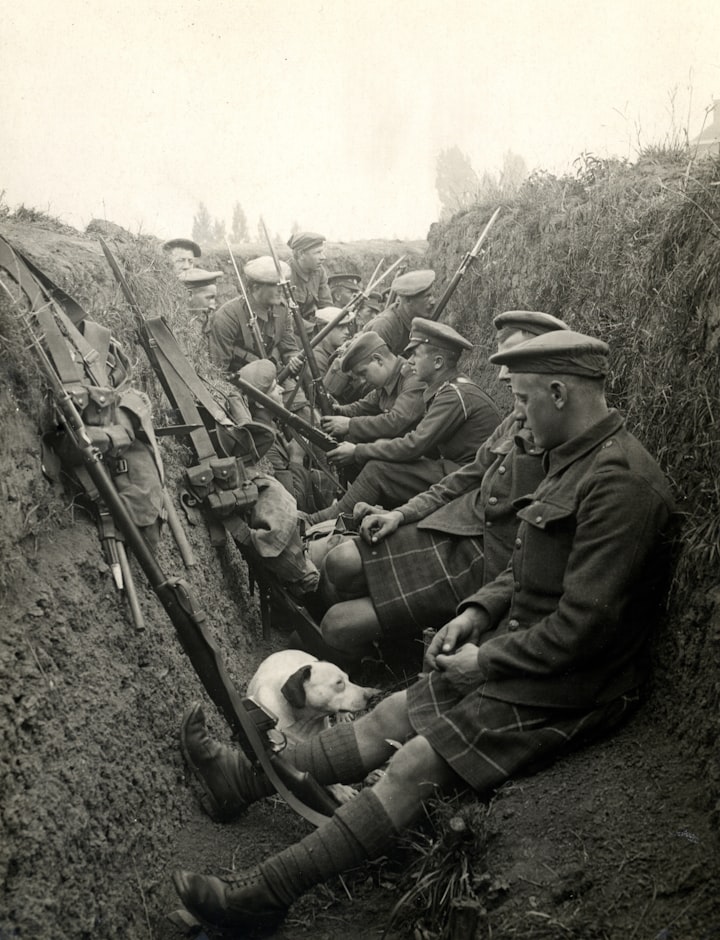
Title: Shadows of Strife: The Conflict in Ukraine
Chapter 1: A Fragile Peace
The conflict in Ukraine cast a long shadow over the region, with its roots tracing back to historical and political complexities. The country had been grappling with internal divisions and external pressures for years, but it was in 2014 that tensions escalated dramatically. The Ukrainian government's decision to prioritize closer ties with the European Union led to protests in Kiev's Maidan Square, eventually leading to a change in leadership.
Chapter 2: The Annexation of Crimea
In the midst of Ukraine's political turmoil, a new crisis emerged with the annexation of Crimea by Russia in March 2014. The international community was quick to condemn this move, deeming it a violation of Ukraine's sovereignty. Tensions soared as clashes between pro-Russian separatists and Ukrainian forces erupted in Eastern Ukraine, particularly in the Donetsk and Luhansk regions.
Chapter 3: Escalation and International Response
As clashes intensified, the world watched with growing concern. The United States and the European Union imposed sanctions on Russia, aiming to pressure them into withdrawing from Crimea and de-escalating the situation in Eastern Ukraine. Diplomatic efforts were made, but a comprehensive resolution remained elusive as both sides dug in their heels.
Chapter 4: Humanitarian Crisis
The conflict brought about a humanitarian crisis, with thousands of people displaced from their homes due to the violence. Civilians caught in the crossfire endured unimaginable hardships, and the international community scrambled to provide aid and support. Stories of families torn apart, homes destroyed, and lives upended painted a grim picture of the consequences of war.
Chapter 5: Minsk Agreements and Ceasefires
Attempts at peace negotiations resulted in the Minsk agreements, brokered by the Organization for Security and Co-operation in Europe (OSCE). These agreements aimed to establish ceasefires, exchange prisoners, and grant more autonomy to the separatist regions. However, implementing the terms of these agreements proved challenging, and sporadic outbreaks of violence continued.
Chapter 6: Lingering Uncertainty
As years went by, the conflict in Ukraine remained unresolved. The situation continued to fluctuate between moments of relative calm and sudden escalations of violence. Diplomatic efforts persisted, with various international actors attempting to facilitate talks between Ukraine and Russia, but finding a lasting solution proved to be an intricate puzzle with deep-seated historical and geopolitical dimensions.
Epilogue: Seeking a Path to Peace
The conflict in Ukraine serves as a stark reminder of the complexities and consequences of geopolitical struggles. The human cost of the conflict is immeasurable, with lives lost, families torn apart, and communities shattered. The world continues to hope for a peaceful resolution that respects Ukraine's sovereignty, addresses the legitimate concerns of all parties, and fosters stability in the region.
While diplomatic efforts persist, the scars of the conflict endure, and the road to lasting peace remains uncertain. The conflict in Ukraine stands as a testament to the urgent need for dialogue, understanding, and cooperation on the global stage to prevent further suffering and pave the way for a brighter future.
Stopping the war in Ukraine is a complex and multifaceted challenge that requires a combination of diplomatic, political, economic, and humanitarian efforts. While there is no one-size-fits-all solution, the following are some steps that could contribute to de-escalating the conflict and working towards a peaceful resolution:
Ceasefire and De-escalation: All parties involved should commit to an immediate and comprehensive ceasefire. This would provide a much-needed reprieve for civilians caught in the conflict and create an environment conducive to negotiations.
Negotiations and Diplomacy: Diplomatic channels should be prioritized to bring all parties to the negotiating table. International organizations such as the United Nations and the Organization for Security and Co-operation in Europe (OSCE) can play a crucial role in facilitating talks and mediating between conflicting parties.
Comprehensive Peace Agreement: Efforts should be made to negotiate a comprehensive peace agreement that addresses the root causes of the conflict, grants autonomy to the regions concerned, ensures the protection of minority rights, and guarantees Ukraine's sovereignty and territorial integrity.
International Mediation: The involvement of influential international actors, such as the United States, the European Union, and neighboring countries, can provide mediation and pressure to facilitate negotiations and encourage compliance with agreements.
Sanctions and Incentives: Economic sanctions can be used as a tool to pressure parties to adhere to a peaceful resolution. On the other hand, offering incentives such as economic assistance and trade benefits for compliance with peace agreements can encourage cooperation.
Humanitarian Aid: Ensuring access to humanitarian aid for affected populations is essential. The international community should collaborate to provide essential services, medical assistance, and relief to civilians affected by the conflict.
Media and Information Dissemination: Promote accurate and unbiased reporting to counter misinformation and propaganda that can fuel tensions and misinformation. Encouraging open dialogue and transparent information sharing can help build trust among parties.
Reconciliation and Post-Conflict Reconstruction: Once a peace agreement is in place, efforts should be made to facilitate reconciliation among communities affected by the conflict. Post-conflict reconstruction and development initiatives can help rebuild the affected areas and provide opportunities for sustainable growth.
Civil Society Engagement: Empower civil society organizations, NGOs, and local community leaders to play a role in building bridges between conflicting parties and advocating for peace.
Long-term Conflict Prevention: Address the underlying issues that led to the conflict, such as political grievances, economic disparities, and social divisions. Promoting good governance, inclusivity, and equal representation can contribute to preventing future conflicts.
It's important to recognize that achieving peace is a long and challenging process. Success requires the collective efforts of both domestic and international actors committed to finding common ground and working towards a sustainable solution that prioritizes the well-being and security of the people of Ukraine.
About the Creator
Gbenga Matibo Ogungbade
Am a very good writer...





Comments
There are no comments for this story
Be the first to respond and start the conversation.